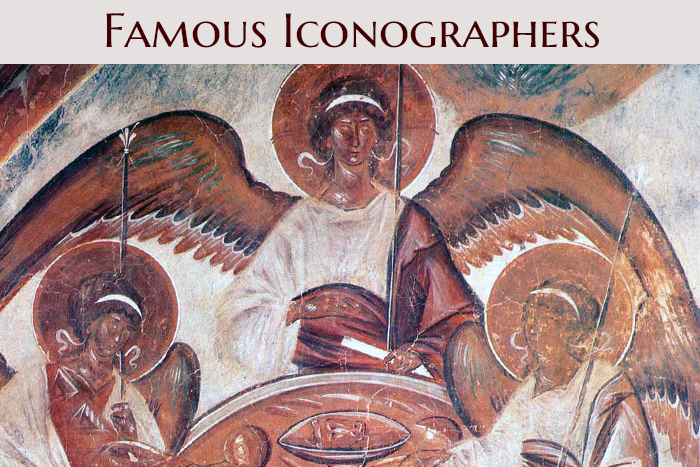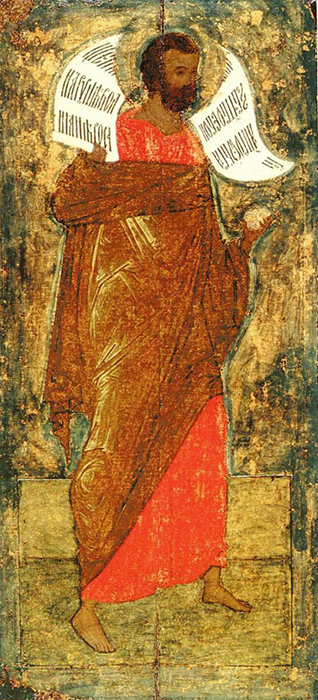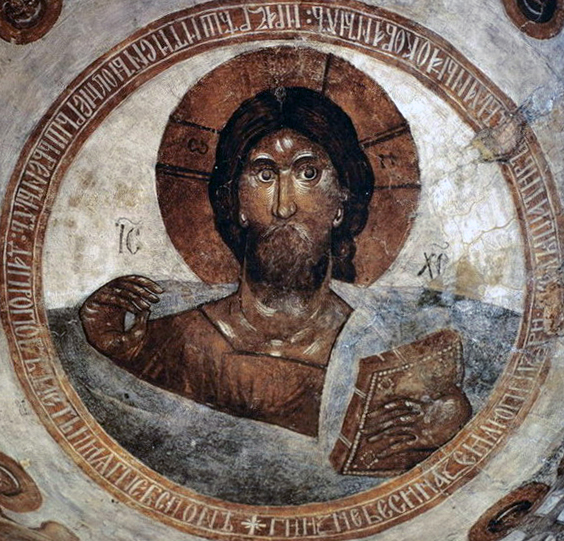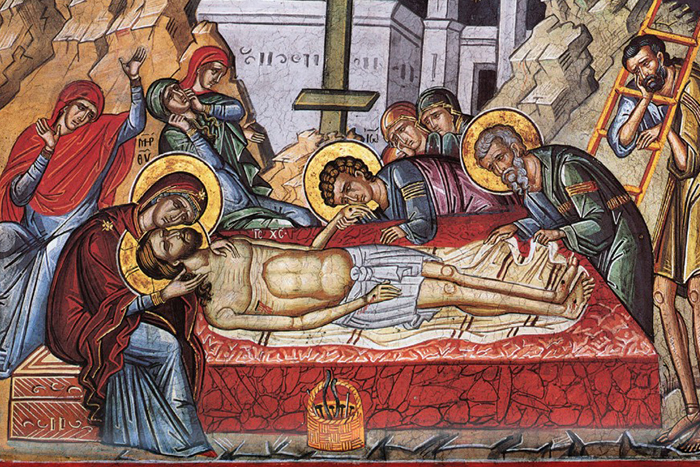
The development of Russian culture in the Middle Ages is characterized by the active development of church architecture. Newly built temples had to be decorated with interior decoration. As early as the second half of the 14th century, many outstanding painters of Byzantine and Balkan origin who had been trained in the workshops of Constantinople and Thessaloniki arrived in Moscow, Novgorod, probably in Pskov and perhaps in other major cities of Russia. They introduced sophisticated painting techniques, and Russian iconographers were adopting these techniques, learning from the Byzantines and helping them to create large paintings.
The names of a few of these teachers have survived to date, including that of Theophanes the Greek.
He was born in Byzantium (hence the nickname Greek), and before coming to Russia he had worked extensively in Constantinople, Chalcedon (a suburb of Constantinople), the Genoese Galata and Caffa (now Theodosia in the Crimea), developed there as an artist and gained a reputation. Theophanes came to Russia not as an ordinary artist, but as a famous maestro, a genius in his field.

It is quite difficult for a contemporary person to imagine how an iconographer’s workflow was actually organized at that time. One can imagine that the work was executed by some silent and focused monks. Surprisingly, however, according to the extant memoirs of Theophanes the Greek’s contemporaries, Theophanes’s creativity and imagination were so striking that they wrote about him, “When he [Theophanes the Greek] was drawing or painting all those images, no one ever saw him stare at the samples, as some of our iconographers do. They are constantly confused and refer to the samples all the time, looking back and forth. Apparently, they look at the samples more than they actually paint the icon. [Theophanes] did paint icons but he was constantly walking, talking to the visitors and thinking about the noble and the wise matters at the same time, while his eyes were in persistent scrutiny of the mind and its goodness.”
Theophanes’s style is characterized by temperament, sharpness,and impetuosity. First of all, he is a painter and he shapes his figures with energetic, bold strokes, adding bright glare to them, which makes the faces flutter and highlights the intensity of their expression. The art of Theophanes the Greek may be regarded as the most comprehensive manifestation and the perfect embodiment of the two poles of Byzantine spiritual life as reflected in culture: the antique principle of the glorification of earthly beauty as a Divine creation and as a reflection of the highest excellence versus the pursuit of asceticism, which rejects the external, the glamorous, and the attractive. Hence, his color palette tends to be minimalistic and reserved, but the colors are saturated and intense, all the while the brittle sharp lines and the complex rhythm of the composition further reinforce the overall expressiveness of the images.

The works of Theophanes the Greek are conventionally divided into two periods: his work in Novgorod and his work in Moscow. It is known that Theophanes the Greek also took part in painting dozens of churches in Russia. He painted a number of icons and also created book miniatures (e. g., he is credited with the illustrations in the Gospel of Fedor Koshka and the miniatures in the Khitrovo Gospels). His most famous works are the Church of the Transfiguration of the Savior on Ilyina Street in Novgorod (we know for a fact that the work was made by him), as well as St. Michael the Archangel Cathedral and the Annunciation Church of the Kremlin. A chronicle has it that he painted the latter church together with Andrey Rublev and Prokhor of Gorodets.
There is an iconostasis in which Theophanes the Greek painted the deesis part. The brilliance and outstanding manner of the Greek showed itself with amazing power. The central image of the Savior has been less preserved than others, but the skill and virtuosity of the iconographer is still evident: Jesus sits on the throne in white robes emblazoned with gold hatching, while John the Baptist and the Blessed Virgin are praying to Him. The most expressive image is that of the Mother of God who wears a deep-blue garment with subtle pale-blue flashes that shimmer in darkness. This color is reminiscent of a sapphire, a precious stone that symbolizes the mystery of the Ever-Virgin. Her elongated figure looks like a candle, and the face of the Virgin Mary is the flame of that candle. The light is streaming out of her eyes softly and at the same time energetically.

Not much is known about the icons painted by Theophanes the Greek. Artists usually did not sign their works in ancient times. Nevertheless, there are several icons attributed to him. One of them is the icon of the Transfiguration from Pereslavl-Zalessky. The icon is big (184×134 cm) and impressive. Jesus Christ is portrayed standing on top of a mountain, while his disciples are on the ground frightened and trembling. The Savior is surrounded by radiant glory; golden rays emanate from Him. The light penetrates the scene, blowing up everything from the inside, essentially making the traditional caves on the hills look like funnels of an explosion. The miracle of the Transfiguration is shown as a cosmic event that turns the universe upside down, transforming the whole creation.
Traditionally, the art of Theophanes the Greek is associated with the Russian culture but he still was and is a Byzantine Greek, both as a thinker and as an artist. Art historians may argue whether Theophanes was the teacher of Andrey Rublev or not, but at any rate they used to work together, which could not but affect the formation of a younger painter who would set the course for Old Russian art after the decease of the great Theophanes the Greek.



